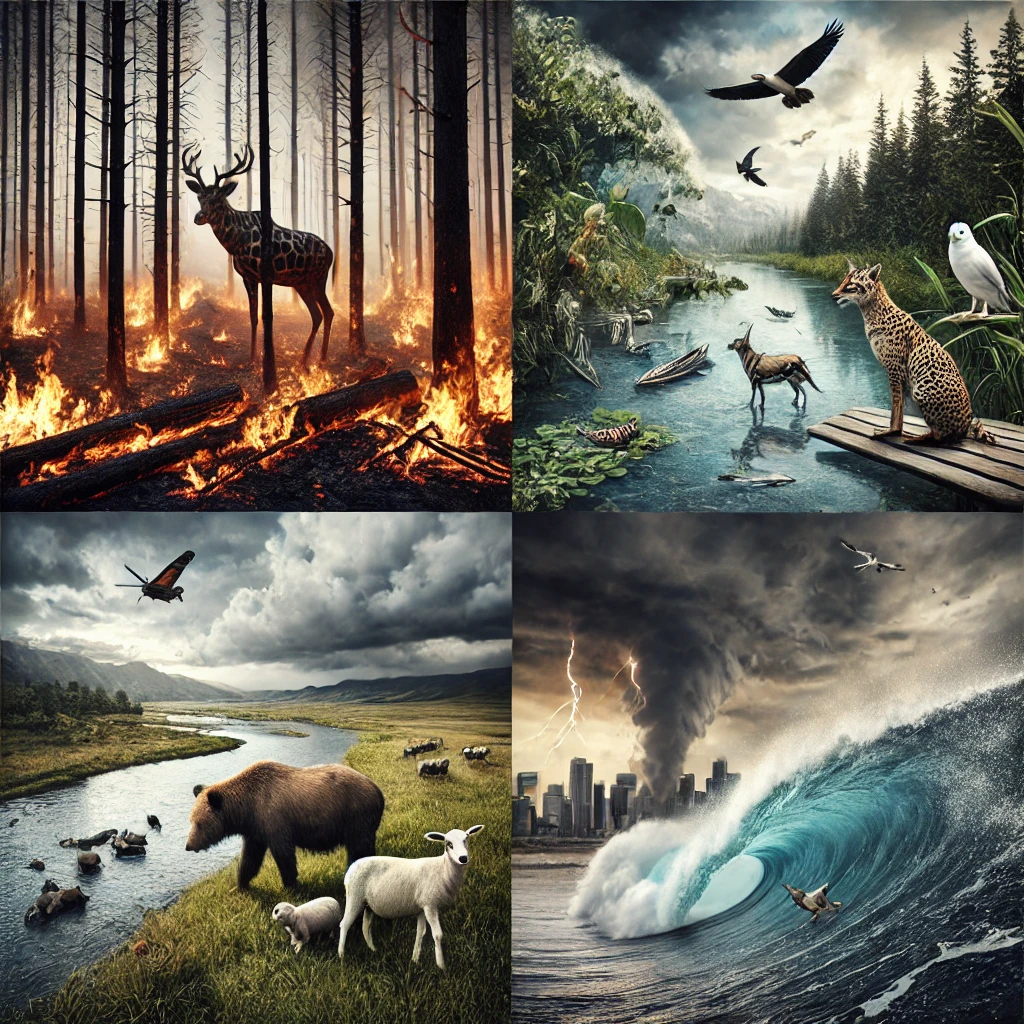Ecology and natural disasters are intricately linked, with each impacting the other in profound ways. Climate change has intensified natural disasters, leading to more frequent and severe ecological consequences worldwide. Here’s a closer look at how ecological systems are affected by natural disasters and the role climate change plays. The interaction between ecology and natural disasters is increasingly evident as climates shift and environments change:
- Wildfires and Forest Ecosystems: Rising temperatures and prolonged droughts, driven by climate change, create conditions that increase the frequency and intensity of wildfires. Forest ecosystems suffer immensely, with fires disrupting wildlife habitats, destroying vegetation, and releasing massive amounts of carbon dioxide into the atmosphere. This is a clear intersection of ecology and natural disasters.
- Floods and Aquatic Ecosystems: Extreme weather events such as hurricanes and heavy rainfall lead to flooding, which affects rivers, lakes, and coastal areas. Flooding disrupts aquatic ecosystems, introduces pollutants into water bodies, and endangers species reliant on stable habitats. The ecology and natural disasters topic is especially relevant when considering the impacts on water systems.
- Hurricanes and Coastal Areas: Warmer sea temperatures fuel stronger hurricanes, which damage coastal ecosystems, destroy coral reefs, and erode shorelines. These events can displace human populations and wildlife alike, leading to long-term ecological challenges in affected areas.
- Drought and Desertification: Prolonged droughts alter landscapes, reduce biodiversity, and contribute to desertification in certain regions. This shift in climate reduces arable land, threatens species adapted to specific environments, and creates challenges for agricultural sustainability. Droughts are another instance where ecology and natural disasters intersect significantly.
- Loss of Biodiversity: The frequency of natural disasters can disrupt delicate ecosystems, reducing biodiversity and impacting endangered species. Plants and animals may struggle to adapt to the rapidly changing environment, leading to a loss of species and a weakened ecosystem resilience.
Conclusion
The link between natural disasters and ecological degradation is becoming increasingly evident as climate change accelerates. Protecting ecosystems, investing in resilient infrastructure, and addressing the root causes of climate change are crucial steps to mitigate these impacts and preserve ecological health for future generations. Understanding the relationship between ecology and natural disasters can help drive these changes.

